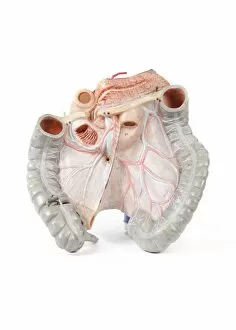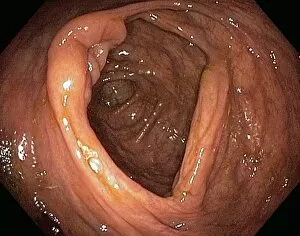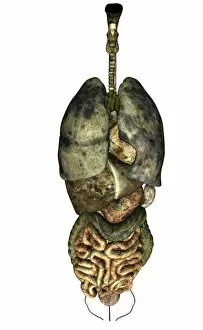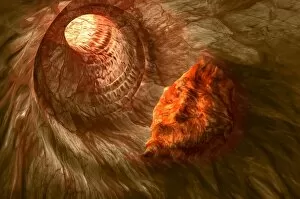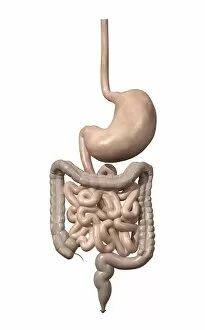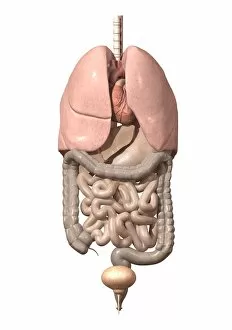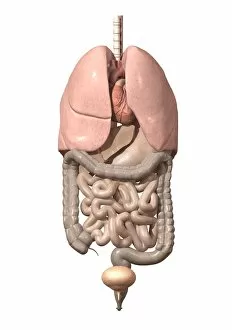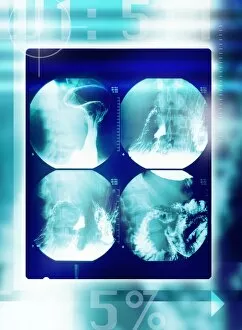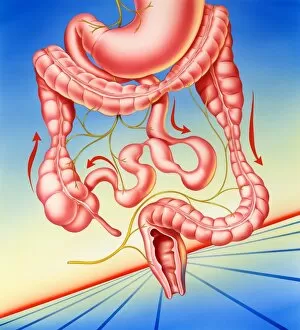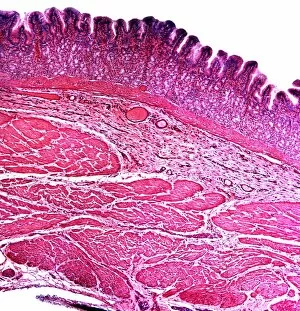Ileum Collection (#2)
The ileum, a vital part of the human digestive system, plays a crucial role in nutrient absorption
For sale as Licensed Images
Choose your image, Select your licence and Download the media
The ileum, a vital part of the human digestive system, plays a crucial role in nutrient absorption. Located in the small intestine, it is responsible for breaking down food particles and extracting essential nutrients to nourish our body. In a cross-sectional biomedical illustration of the human digestive system connected to the esophagus, we can see how the ileum forms an integral part of this intricate network. Its inner lining is designed with tiny finger-like projections called villi that increase its surface area for maximum nutrient absorption. A female body showcasing both the digestive and circulatory systems highlights how these two systems work hand in hand to ensure proper functioning of our body. The ileum's close proximity to blood vessels allows for efficient transport of absorbed nutrients throughout our bloodstream. Similarly, an anatomy depiction of male respiratory organs and internal organs emphasizes how interconnected our bodily systems truly are. The ileum works alongside other organs such as the lungs and liver to maintain overall health and well-being. Visualizing internal organ structures through 3D renderings provides us with a deeper understanding of their complexity. A healthy female's internal organs exhibit remarkable intricacy, including the ileum nestled within her digestive system. Meanwhile, a male anatomy diagram showcases various internal organs against a blue background - illustrating their location within his body while highlighting the importance of each individual component. Examining front view illustrations helps us comprehend how different parts come together harmoniously within our bodies' complex machinery. Observing an anatomical representation from this perspective reveals where exactly we can find the ileum amidst other components like stomach or intestines. Superimposing interior organ images onto a woman's midsection further enhances our comprehension by providing visual context on their placement within her body structure. This technique aids in recognizing precisely where one would locate vital elements like the ileum when examining real-life scenarios or medical cases. Lastly, exploring general colon anatomy with labels gives us insight into specific regions along our intestinal tract.


